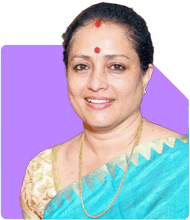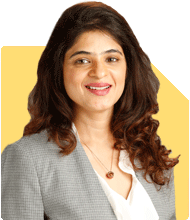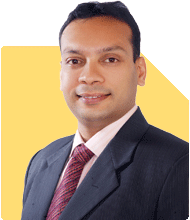
Hey,
I m 43 yrs old now, working as a freelancer earning around 2L per month, but don't know how long it will work and now not feeling to join any Job, I have a daughter and a son 12 and 6 yrs old respectively.
Currently I am holding around 90L in stocks
5.5L in mutual fund with SIP of 50K per month.
I own a house, which is debt free
Also own a office space and a studio apartment which are rented out and getting around 33K from rent per month.(Both are debt free)
Life Policies
For LIC policy paying from last 12 years around 3.6L per annum need to for another 10 yrs I think so
Hdfc life paid 2.5 per annum for 5 years and waiting for maturity.
SBI life paid 1.5 per annum for 5 years and now waiting for maturity.
Aditya Birla paying 25k from last 12 years need to pay it for another 18 years
Bought a term life plan for 1.75cr and paying 5k per month.
Currently I have a car loan and a loan against policy paying around 70K as a EMI per month it will get completed in next 2.5 years.
Now my goal is to get 3L per month after 5-6 years.
Please let me know how should I achieve this.
Thanks
Ans: Your earnings, assets, and goals show you are disciplined and proactive. Let us look at your situation in depth—covering all angles and offering insights that shape a solid path forward.
? Current Financial Snapshot
– Age 43, freelancer, earning around Rs.?2 lakh per month.
– Family: Daughter (12) and son (6).
– Holding Rs.?90 lakh in direct equity stocks.
– Mutual fund investments worth Rs.?5.5 lakh.
– SIP of Rs.?50,000 per month into mutual funds.
– Owns a debt?free home, office space, and studio apartment.
– Rental income of Rs.?33,000 per month.
? Insurance and Loan Overview
– LIC policy premium Rs.?3.6 lakh per annum, continues for 10 more years.
– HDFC Life policy premium Rs.?2.5 lakh per annum, 5 years left.
– SBI Life policy premium Rs.?1.5 lakh per annum, 5 years left.
– Aditya Birla policy premium Rs.?25,000 per annum, 18 years remaining.
– Term life insurance cover Rs.?1.75 crore, premium Rs.?5,000 per month.
– Car loan and loan against policy: EMI Rs.?70,000 per month, ending in 2.5 years.
Your goals: To receive Rs.?3 lakh per month in income after 5–6 years. Let us break down your plan with professional insight.
? Strengths in Your Setup
– Debt?free real estate assets provide passive income and safety.
– You have strong equity holdings for growth potential.
– SIP of Rs.?50k monthly shows systematic investing behaviour.
– Term insurance provides robust life protection.
– Rental income adds stable, recurring cash flow.
– You have clear income goals and timeframe.
Your structure is built on robust foundations. You have the potential for reliable financial freedom.
? Key Challenges to Address
– High exposure to direct stocks (Rs.?90 lakh) increases risk and requires active management.
– Low mutual fund base relative to equity exposure may limit diversification benefits.
– Insurance?linked savings policies with heavy premiums limit fund allocation flexibility.
– EMI of Rs.?70k is delaying capital growth until it ends.
– Freelance income can vary and may not last indefinitely.
– You need to plan for higher income needs in 5–6 years to reach Rs.?3 lakh monthly.
? Goal Definition: Rs.?3 Lakh Monthly Income
– You plan to retire or reduce activity by age 48–49.
– Your target is Rs.?3 lakh monthly sustainable income.
– Current passive income: Rs.?33k (rent) + planned SIP/withdrawal.
– Gap: You need about Rs.?2.7 lakh extra per month in 5–6 years.
To achieve this, you need to build a corpus that can sustainably generate Rs.?32.4 lakh per year. Assuming a safe withdrawal rate near 4–5%, you need a corpus of Rs.?6.5–8 crore by then.
? Fund Allocation Strategy – Balancing Growth and Stability
You need to grow your portfolio significantly while managing risk.
Increase mutual fund investments:
– Gradually rebalance direct stocks into actively managed mutual funds, including:
Large?cap, flexi?cap, multi?asset, balanced advantage.
– Avoid index funds—they cannot protect in market downturns.
– Active funds help adjust allocation, sector mix, and volatility.
Step up your SIP:
– Continue Rs.?50k monthly SIP.
– Each year increase by 10–15% to offset inflation and build corpus faster.
Use car/policy loan EMI savings well:
– When EMI ends in 2.5 years, redirect Rs.?70k monthly to SIPs or discretionary debt.
? Mutual Fund Selection – Validate and Simplify
You hold Rs.?5.5 lakh in mutual funds today. This needs scale and proper distribution.
– Keep only 5–6 high?conviction funds.
– Choose a mix of diversified equity and hybrid funds.
– Balanced advantage funds provide equity exposure with bond protection.
– Avoid sector/thematic funds. They are risky and reduce diversification.
– Continue via regular funds through MFD + CFP for guidance and monitoring.
If any fund underperforms for more than two years, consider switching.
But do not stop SIP during a temporary correction.
? Equity Stocks – Risk Management Needs
Your equity exposure is strong but concentrated in direct holdings.
– Review top 20 holdings for quality, weight, and sector risk.
– If concentration is high in volatile sectors, rebalance into mutual funds.
– Use staggered selling to minimise capital gains tax and market impact.
– LTCG on equity above Rs.?1.25 lakh per year is taxed at 12.5%.
– STCG is taxed at 20%.
Keep direct stocks only if you can track performance and rebalance every year. Otherwise, mutual funds offer effective diversification.
? EMI Impact and Post?Loan Strategy
Your car and policy loan EMI of Rs.?70k monthly ends in 2.5 years.
Once EMI ends:
– Reinvest Rs.?70k monthly into your SIP basket.
– This alone can generate Rs.?2.5–3 crore over 10 years at consistent returns.
– Combined with stepped-up SIP, this positions corpus well for Rs.?3 lakh goal.
Ensure no immediate "lifestyle" spend after EMI ends. Redirect to wealth creation.
? Insurance?Linked Plans – Reevaluate and Reallocate
You hold multiple insurance investment policies (LIC, HDFC Life, SBI, Aditya Birla).
Suggestion:
– These plans give low net returns and lock-in.
– Since you already have term cover and health insurance, these are redundant.
– Consider surrendering them, if surrender value is acceptable.
– Use the freed-up premiums to invest in mutual funds for faster growth.
You need capital growth now. These insurance plans may limit you.
? Income Generation – Building a Sustainable Yield
Rental income of Rs.?33k is stable. But major income must come from investments.
In 5–6 years:
– Assume rental stays Rs.?33k/month (no growth).
– Monthly SIP (with step-ups) and corpus withdrawal/SWP could add Rs.?2 lakh.
– This helps reach Rs.?3 lakh goal.
Maintain a balanced asset allocation that generates both growth and yield.
Hybrid funds will provide dividends and capital appreciation.
? Emergency Fund and Liquidity Cushion
Your freelance income may fluctuate. Maintain buffer liquidity.
– Keep Rs.?6–8 lakh in ultra-short duration or liquid fund.
– Doesn’t earn much, but provides stability.
– Don’t use direct savings account for this.
This fund covers 3–4 months of expenses and cushions income dips.
? Child Education and Family Planning
You have two children. Plan their education separately.
– Son (12) needs funds in 6–8 years for higher studies.
– Daughter (6) needs funds in 12–15 years.
– Start two SIPs: one for each child’s education, separate from retirement SIP.
– Prefer a mix of flexi?cap and conservative hybrid funds.
– Do not dip into this fund for retirement or emergencies.
Separate goals, clear tracking.
? Inflation and Cash Flow Management
Current Rs.?3 lakh goal is good. But inflation will increase costs over time.
– Assume 6% inflation rate. Your target income may reach Rs.?5 lakh per month in 20 years.
– Continue SIP step?ups by at least 10–12% yearly.
– Rebalance portfolio every year with a Certified Financial Planner.
– Monitor healthcare costs as they rise faster than inflation.
Inflation diminishes real purchasing power. Plan accordingly.
? Freelance Income Risk – Insurance and Alternate Sources
Your income is freelance?based and variable.
– Consider income protection insurance (disability/critical illness).
– This protects you if you cannot work for extended periods.
– Consider building a small side income:
Online teaching, consulting, content writing
Skill monetisation in digital or workshops
A fallback income adds stability and financial freedom.
? Healthcare and Term Insurance Adequacy
You have term and multiple insurance covers. Check adequacy.
– Health insurance may need top-up to Rs.?10 lakh or more.
– Term cover of Rs.?1.75 crore is good. Review after policy-linked savings are surrendered.
– Consider raising cover if obligations increase post retirement.
Insurance secures your family’s future and gives financial peace.
? Regular Monitoring and Review Schedule
Your financial world will change. You must adjust accordingly.
– Set review meetings with a Certified Financial Planner every 6 months.
– Track these:
Portfolio returns and allocation
SIP performance and step-ups
Insurance needs
Cash flow and EMIs
Children’s education savings
Freelance income health
This discipline prevents drift and ensures you stay on track toward Rs.?3 lakh goal.
? Why Active Management is Crucial
Even if you think index funds are easy, they lack human oversight.
– Index funds blindly follow markets and can't reduce exposure in downturns.
– Actively managed funds adjust portfolio based on market conditions.
– They help manage downside risk—especially in retirement and goal?withdrawal phase.
– In long-term investment, active funds can deliver better risk?adjusted returns.
– Regular funds via MFD with CFP support guide you through market cycles.
Don’t be tempted by low-cost index funds when your goals require protection and discipline.
? Finally
– Your current position is strong, with assets and income.
– But risks include concentrated equity, heavy insurance savings, and income variability.
– By redirecting insurance savings toward mutual funds, you build faster.
– By stepping up SIP and reallocating EMI savings, you will reach your income goal.
– Maintain liquidity, child education funds, and insurance adequacy.
– Use actively managed and balanced funds.
– Review regularly with your Certified Financial Planner.
– Avoid fixed or complex investment schemes and farmland pitches.
– Build a side income to cushion freelance income risk.
– With discipline and monthly review, achieving Rs.?3 lakh per month in five years is realistic.
Your journey requires steady steps. You are well poised to achieve it with proper structure and support.
Best Regards,
K. Ramalingam, MBA, CFP,
Chief Financial Planner,
www.holisticinvestment.in
https://www.youtube.com/@HolisticInvestment


























